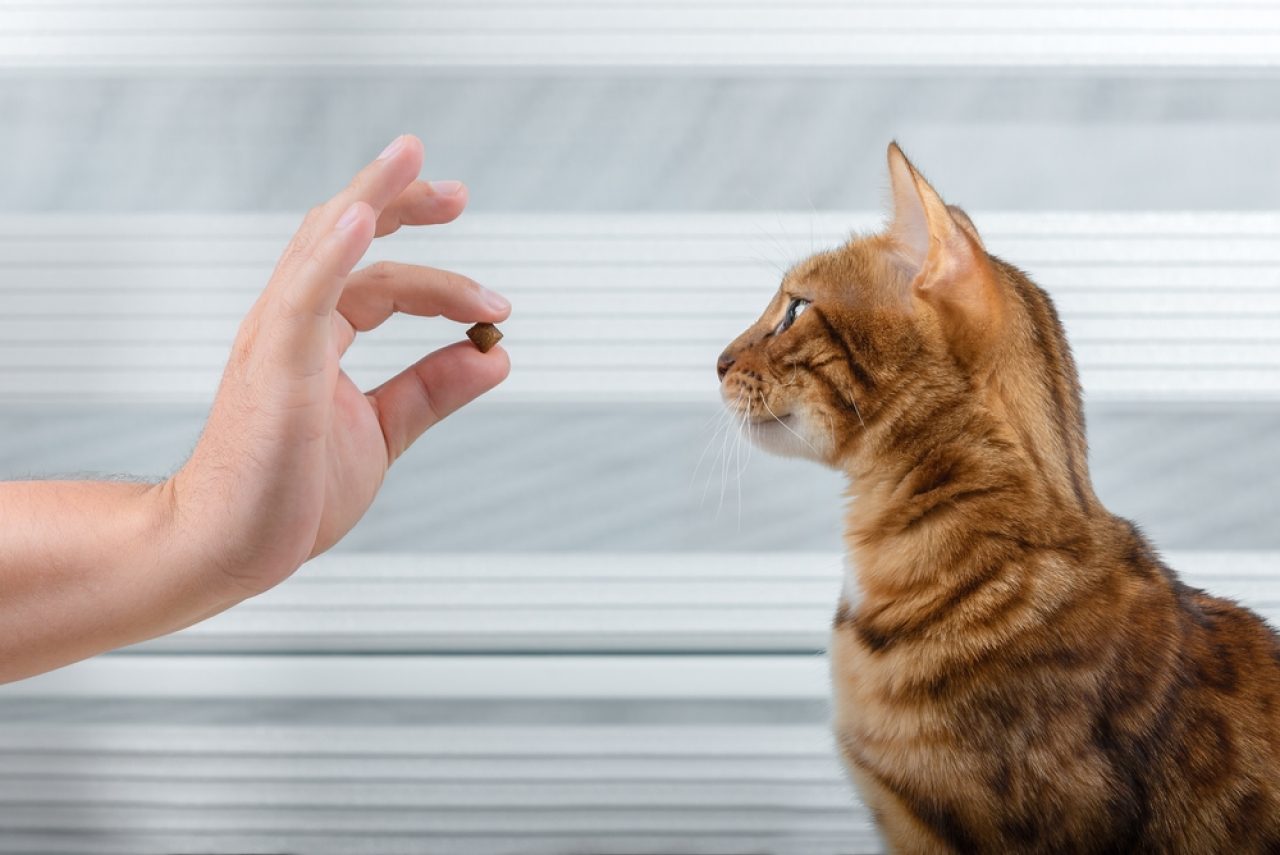Having a home filled with pets is a wonderful way to live, but it’s not always the easiest. Being a dog and cat parent has its challenges, especially when it’s time to train them. They’re very different and respond differently to training. So, although they work with puppers, can cats hear dog whistles?
Having a dog usually means you spend quite some time training him. Since they’re so different from cats, they require different training methods, too. If your kitty and puppy share a home, you have to make sure that the training doesn’t negatively impact your feline diva.
Dog whistles are super useful when it comes to dog training, but cat parents often wonder if they affect their feline companions, as well. Cats have sensitive hearing, so there’s a high chance that they hear just about anything.
To understand whether or not cats hear dog whistles and if they’re in any way affected by them, it’s important to know what’s your kitty’s hearing range. That’ll help you understand what kind of noises she can hear, and how safe they are for your fluff.
Felines’ hearing range

Cats have super sensitive hearing. In fact, they have the broadest range of hearing out of most mammals! Although dogs are known for their superhero senses, you might be surprised to learn that our kitties hear lower and higher frequencies than puppers.
A lot of dog owners believe their furry besties have the best hearing because it’s so sharp. If you’re one of them, we’re sorry to break it to you, but cats win the hearing game. In nature, our pawdators prey on small animals such as mice, rats, and other rodents that make high-pitched noises.
So, in order to survive, feline superheroes need to hear ultrasounds. Your indoor cat probably spends most of her day napping and lazing around, but she still has excellent hearing she inherited from her ancestors. Even if the only thing she hunts is her food bowl.
Next time you think your kitty can’t hear you when you’re calling her from the other room, just know she’s somewhere under your bedsheets, choosing to ignore you. Typical, isn’t it?
Can cats hear dog whistles?
If you’re still wondering if cats can hear dog whistles – the answer is yes, they can. Let’s put it like this. Our fluffy feline companions can hear anything between 48 Hz and 85 kHz. On the other hand, dog whistles produce frequencies ranging from 23 to 54 kHz, making them pretty easy for our kitties to hear.
These special whistles produce sounds that are beyond what we can hear. It seems crazy that your fluff can hear things that sound like total silence to you, doesn’t it? Although the whistles are mainly used for dog training, our kittos have no issues picking their frequencies, too.
Even though cats can hear them, dog whistles probably won’t affect them the same way they affect dogs. We all know our purrinces and purrincesses do what they want and when they want it, so don’t expect your kitty to go crazy once she hears the whistle.
Will your kitty respond to a dog whistle?

So, yes, your purrer can easily hear the dog whistle, but that doesn’t guarantee that she’ll react to it. If you’re here trying to figure out if cats can hear dog whistles then you’re probably confused as to why your kitty isn’t responding to it, but your puppy is.
Is that really a surprise? There’s not much that cats find interesting, and that includes dog whistles. They’re more likely to react to you opening a bag of chips than cool ultrasound frequencies. They’re like superheroes that simply don’t care!
Therefore, it’s hard to tell if your kitty is affected by something because they rarely react to anything. It takes a great deal to get our fluffs to react or move, especially when they’re napping (which is always). Unless we’re talking about food. When treats are around, you’ll see most of your feline buddy.
That, however, isn’t always a funny thing. Because they aren’t so reactive, they’ll also refuse to show pain or discomfort. Our proud purrinces and purrincesses simply won’t let us see them in a vulnerable state, which is why it’s important that we inform ourselves about things that might hurt them.
It’s easy to miss a cat’s reaction to pain, so don’t feel bad if you do. Because your kitty’s hearing is so sensitive, there’s a high chance that dog whistles might be uncomfortable for her.
After all, even if you’re not sure if a dog whistle is hurting your fluff, it’s best to avoid it altogether. Luckily, you can use other training methods that will be just as effective for your doggo.
Is it safe to use a dog whistle to train your fluff?

If you’re asking yourself “Can cats hear dog whistles?” because you plan on training your purrer using one, we’re not sure whether that’s a good idea. In fact, dog whistles aren’t the safest way to train dogs, either.
We’re not saying this because most cats don’t even react to these whistles, but because it might harm your lovely fur kid. Because of their hearing sensitivity, there are plenty of sounds that cats hate. Although we can’t know for sure, there’s a high chance that the frequencies emitted from dog whistles are one of them.
There are a few reasons for that. First off, many cat parents notice their furbabies reacting negatively to high frequencies. Since we can’t hear them, sometimes it’s hard to know what your kitty’s reacting to. Some of the objects that emit high frequencies are computer screens, lightbulbs, and even remote controllers!
Because of their superhero hearing, our kitties can be easily scared by sudden noises. Dog whistles emit small bursts of sound that are sure to alarm your kitty, which is another reason why you should avoid using them.
You never want to make your cat feel scared or uncomfortable. Sometimes, a simple “no” can do wonders, too.
At times, dogs don’t respond to the whistle, which as a result has their owner blowing into it for a longer period of time. If there’s a cat nearby, this could seriously hurt her and cause damage to her hearing.
Since it’s hard to tell whether your cat’s in pain or not, look for these signs:
- Avoiding physical touch
- Hissing and growling
- Hiding
- Excessive or reduced grooming
- Reduced appetite.
We know hurting your fluff is the last thing you want, so you might consider choosing different methods to train her. They’ll probably be much more efficient, too.
Other ways to train your cat

You can find whistles that are marketed as feline-intended, but don’t let them fool you. They’re no different from dog whistles and can do the same damage if used inadequately. No matter how they’re labeled – it’s best to stay away from them.
Luckily, there are other methods you can use, that your kitty might enjoy even more. Especially because they involve treats, and we all know those are the way to your purrer’s heart. Let’s read more about them, so you can choose the one that’s best for you.
1. Use a clicker
You no longer have to wonder about dog whistles and whether they’re even safe to use with cats because you don’t need them at all. Clickers have become one of the most popular ways to train both kitties and doggos.
Not only are they efficient, but they’re also a lot safer and more comfortable for your dear fluffs. Moreover, you can introduce them to your feline friend pretty easily!
Before you even begin training your fluff simple commands, you have to teach her to recognize the clicker, first. Some call it “charging”, and it’s simply creating a positive association with the new tool. It involves treats, so your kitty will absolutely love it.
All you have to do is make a clicking sound, and follow it with a treat. Doing this multiple times will help your fluff make a connection with the clicker and treats, which will make training a lot easier later on.
Once you notice she started positively responding to the clicker, it means you can go ahead and start teaching your smarty some simple commands. These shouldn’t be anything too complicated. Teaching her to come to you when you call her should be just enough for now.
Call your kitty’s name, shake her bag of treats, and make a clicking sound once she comes to you. And don’t forget to give her a treat. In no time, she’ll perfect this command, and you’ll be able to branch out to the more complex ones.
2. Hand signals and voice cues

Another great way to train your cat is by using hand signals. Instead of the clicking sound, you’ll use different hand gestures to associate with different commands.
If you want to work on your fluffy rebel’s behavior, teaching her when to sit is a good way to go. Yes, you can do that with cats, too, not only puppers!
Sometimes, you just want to teach your kitty some cool tricks, such as giving you a high five. No matter what it is, make sure that each command has its own hand gesture.
For example, if you want to teach your kitty to give you a high-five, open your palm so she can make an association with that. Or turn your finger to the floor and tell her “sit”. It’s up to you what you choose, but make sure you don’t change it over time. And don’t give up. These things don’t happen overnight.
Sometimes, you can teach your cat to make an association with different voice cues, too. With this, instead of a hand gesture, you’ll make an association with an action and a word. Tell your cat “sit” or call her name to get her to come to you. And always give her a treat when she does.
Don’t forget that positive reinforcement is the key when training your feline bestie. That way your kitty will know that training is something she should enjoy, and it will produce great results in the end.
Make sure not to force your fluff to do more than she can. Training cats takes time and patience, but it’s a wonderful way to spend some quality time with your favorite furry friend.

